#etruscan art
Text


Two Etruscan sarcophagi showing embracing couples.
#ancient history#ancient culture#etruscans#etruscan civilization#ancient art#etruscan art#etruscan history
4K notes
·
View notes
Text
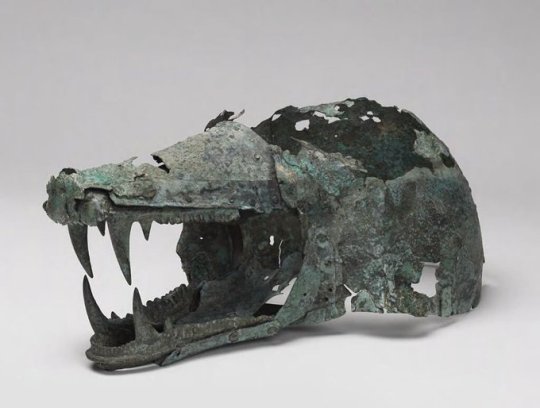
Etruscan Bronze Helmet in the Shape of a Wolf’s Head
6th-5th centuries BCE.
#Etruscan Bronze Helmet in the Shape of a Wolf’s Head#6th-5th centuries BCE#Wolf's Head Helmet#Head of a Boar#bronze#bronze helmet#bronze sculpture#ancient artifacts#archeology#archeolgst#history#history news#ancient history#ancient culture#ancient civilizations#etruscan history#etruscan art
4K notes
·
View notes
Text
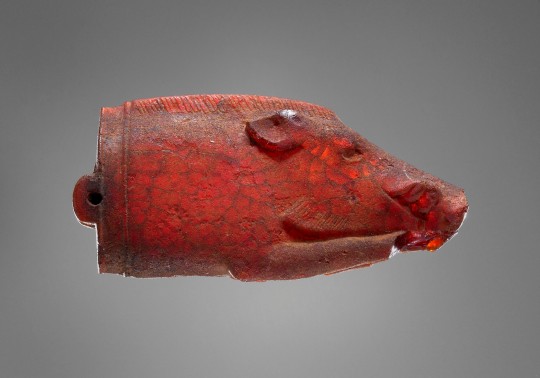
Carved amber boar's head pendant, Etruscan, 525-480 BC
from The J. Paul Getty Museum
971 notes
·
View notes
Text

Etruscan Woman (300 BCE)
519 notes
·
View notes
Text


Carnelian scarab intaglio depicting Prometheus, 4th century BC
from Christies
880 notes
·
View notes
Text

Bronze balsamarium (container for oil or perfume), made in Etruria in the first half of the 3rd century BCE. The balsamarium takes the form of a deity with a winged helmet, variously identified as 1) Turan, goddess of love, fertility, and sexual potency, identified with Aphrodite/Venus and patroness of the Etruscan city of Velch (=Vulci), or 2) one of the Lasas, deities who made up Turan's entourage, possibly connected to the Roman Lares (household gods). Height = 10.8 cm/4.2 in. Now in the Walters Art Museum, Baltimore. Photo credit: Walters Art Museum.
#classics#tagamemnon#Etruria#Etruscan#artifact#artifacts#art#art history#ancient art#Etruscan art#Etruscan religion#sculpture#metalwork#bronzework#balsamarium#Hellenistic period#Walters Art Museum
115 notes
·
View notes
Text



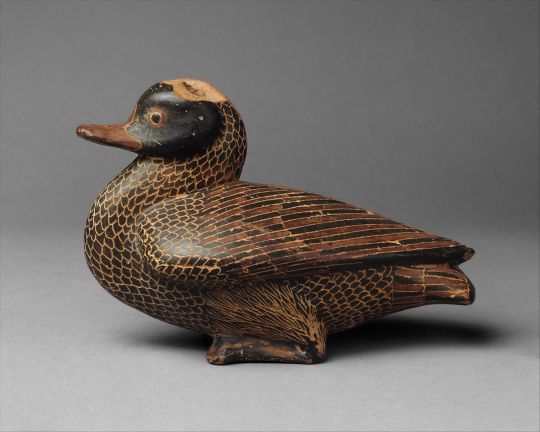


Terracotta askos (flask) in the form of a rooster, Etruscan 4th century BCE.
Heron-Shaped Figure Vase (Oil Vessel), East Greek, probably Milesian c. 580 BC
Protocorinthian terracotta vase in the form of a bird, mid-7th century BCE.
Archaic terracotta vase in the form of a duck, East-Greek mid-6th century BCE.
Terracotta askos (flask) in the form of a jackdaw, Etruscan 4th century BCE.
Swan Vase (perfume container), 575-550 BCE Greece, probably from Rhodes
367 notes
·
View notes
Photo

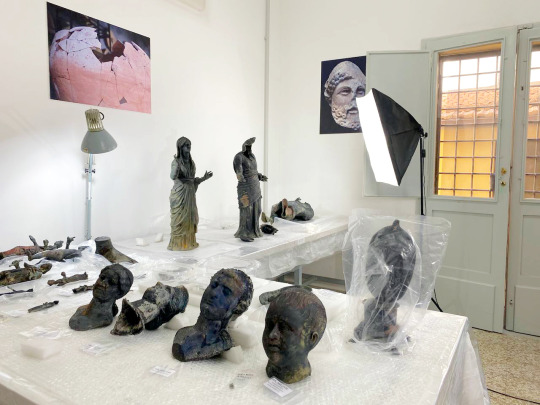
San Casciano dei Bagni bronzes
©: Ministero della cultura
994 notes
·
View notes
Text
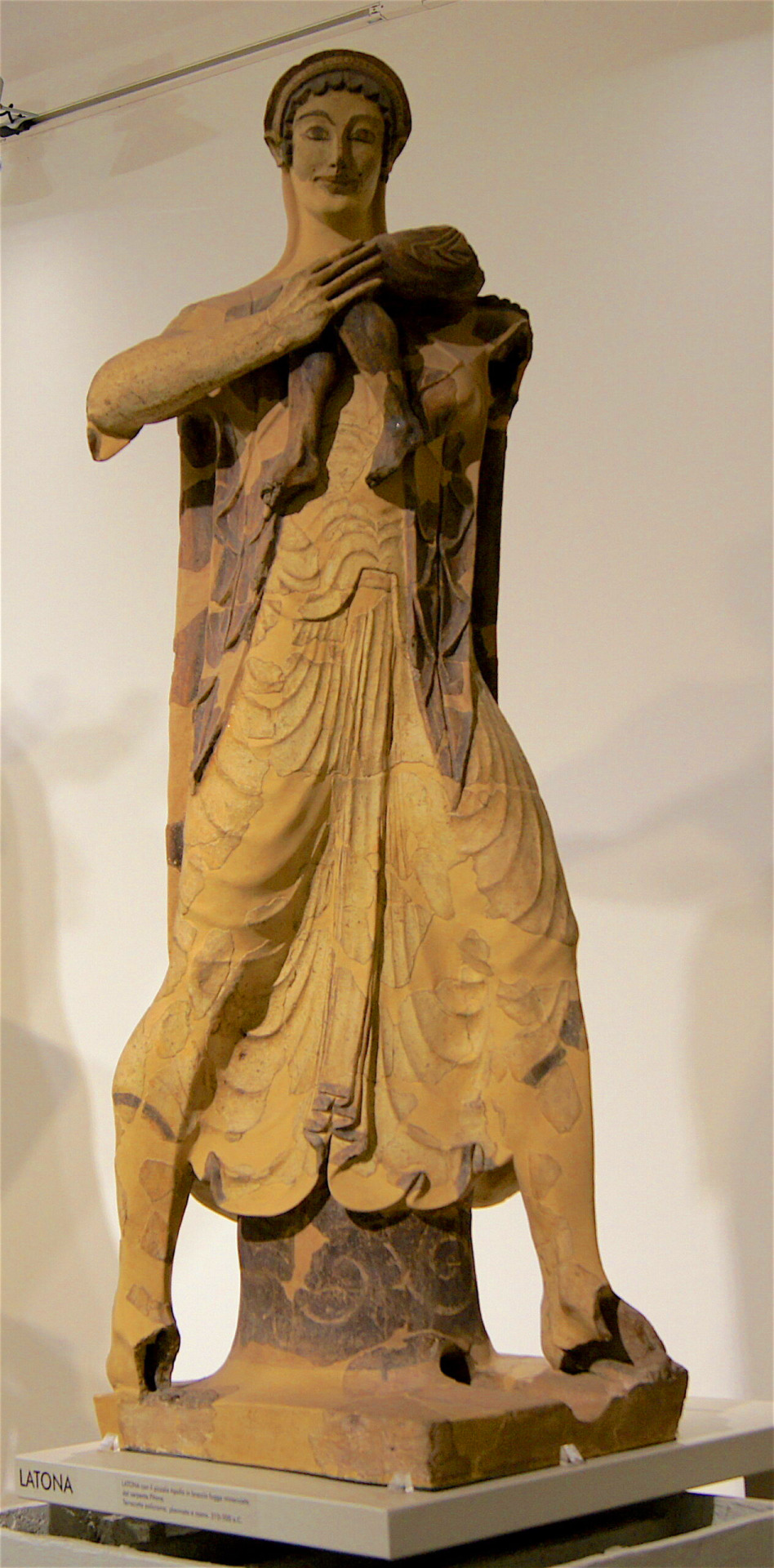
Latona di Veio
This massive statue of the Mediterranean Goddess Latona, holding Apollo in Her hands, was found in the Etruscan city of Veio. In 2022, the statue was set up to restoration - a "much needed" one. The sculpture was found alongside statues of Apollo, Hercules, and Hermes - perhaps all parts of a singular compound scene at an ancient temple.
A legal company Carbonetti e Associati funded the project.
Source, further reading, and restoration process: 🏺 🏺 🏺
#LATONA 🌻#ANTIGÜEDADES 💎#Fun fact: did you know that Apollo was born before Artemis and their birth wasn't always twin birth?#ancient art#art#mediterranean#etruscan#etruscan art#leto#latona#greek mythology#greek gods#anatolian gods#leto deity
98 notes
·
View notes
Text


Male Head from a Pediment Statue, perhaps of Dionysus/Bacchus; late 4th - early 3rd c BCE, terracotta | Found in the Auguratorium on the Palatine hill | Held in the Palatine Museum
#ancient art#unfortunately unknown if roman or greek or even etruscan#roman art#ancient greek art#etruscan art#?#roman terracotta#auguratorium#palatine museum#roman relief#dionysus
138 notes
·
View notes
Photo

Painted plaque. ca 470 B.C., terracotta and pigment. Museum of Fine Arts Boston. (source)
[image description: plaque described above featuring a female lyre-player in a chiton, himation, and sandals. a plant is to her right. /end id]
244 notes
·
View notes
Text
Interpretations
Here's a challenge for you all.
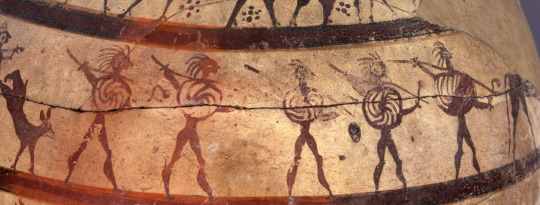
This is part of an amphora found in Italy, dating back to 625-600BCE. It's thought to be Etruscan/Rasnan.
More photographs of the paintings can be found on the British Museum website here
My challenge is for you to try and think about what the circular objects on the chests of the figures are, and why they (mostly) have swirling patterns inside.
Some possibilities:
Shields, though do note that the less worn figures on the right appear to have two limbs either side of the disk not engaged with holding it.
Clothing, definitely possible, though structurally challenging.
A representation of something less literal particular to whatever the profession of these individuals is? Again, certainly possible.
Some other pictures from different parts of the same vessel:



49 notes
·
View notes
Text
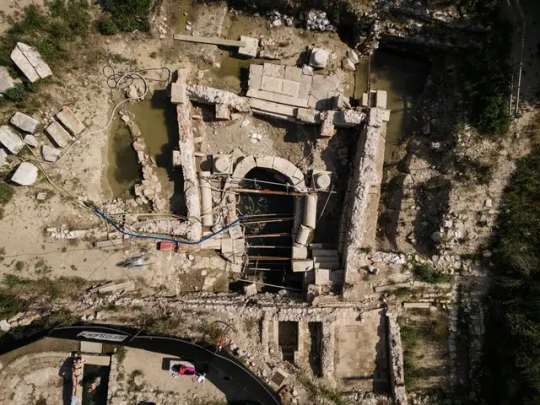


These Bronze Statues Reveal Ancient Healing Rituals
Discovered in a dig at a thermal spring in Tuscany, Italy, the well-preserved items offer a glimpse into medical practices from the Etruscan and Roman eras.
An exhibition that opened Friday at Rome’s Quirinal Palace could be described as a classic rags-to-riches story.
Just ten months ago, many of the bronze statues now on show there — artfully spotlighted and captioned — were submerged in layers of thick mud in what had been a sacred pool of thermo-mineral water roughly halfway between Florence and Rome.
Their rediscovery last fall during an ongoing archaeological excavation in a field just below the Tuscan town of San Casciano dei Bagni made headlines around the world, propelling the bronzes — via a stint in Italy’s main restoration institute — to the rare honor of being exhibited at the presidential palace.
“It’s an extraordinary discovery,” Luigi La Rocca, the culture ministry official responsible for archaeology, fine arts and landscape, told reporters at the palace on Thursday, praising the variety of the bronzes, their quality and their high degree of conservation.
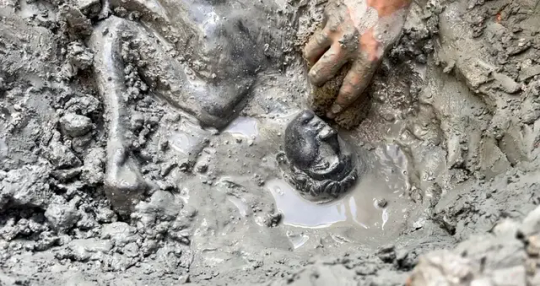
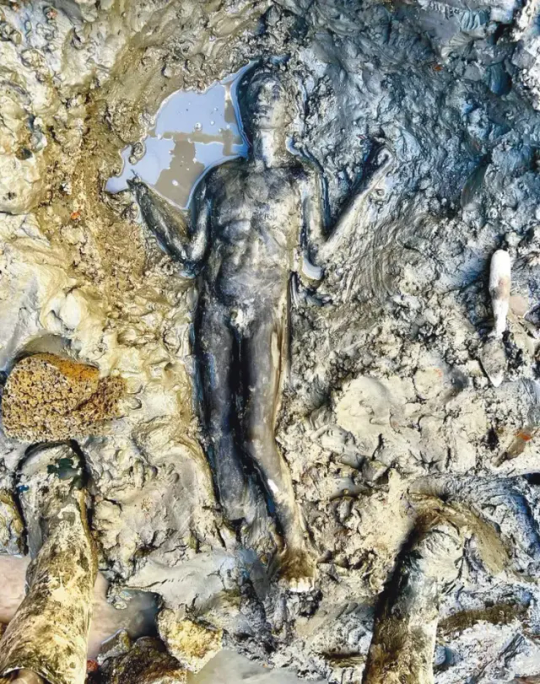
The artifacts — mostly dating from the second century B.C. to the first century A.D. — were votive offerings collected in the sacred pool of the so-called Bagno Grande, or “large bath,” part of a sanctuary that was in use in various forms for more than 700 years.
Lightning struck the building around the first century A.D., and following the Etruscan tradition of burying objects struck by lightning in a sacred place, the statues and other artifacts were concealed under a layer of terra-cotta tiles along with a bronze thunderbolt, a ritual called “fulgur conditum.”
Successive votive offerings, mostly bronze coins and plants, were deposited until Christianity became the official religion of the Roman Empire in the fourth century A.D. Then, the sanctuary was dismantled, and its offerings were buried once again, which contributed to their remarkable conservation.
The dig that uncovered them began in 2019, but it was only in 2020 that the first artifacts — inscriptions, altars and small bronzes — began to emerge. Last year, the archaeologists dug further down into the sacred pool.
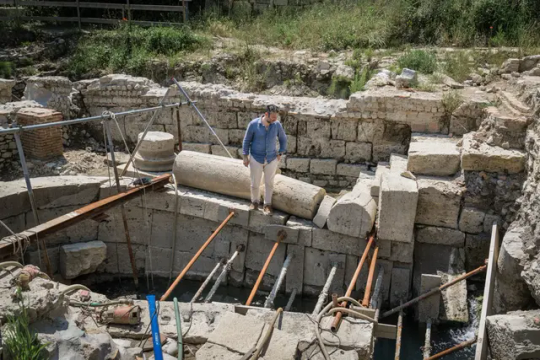
“We thought there could be something here, but nothing like what we found,” said Emanuele Mariotti, the director of the excavation, on a recent hot afternoon as he surveyed the site. “It was like a time capsule waiting to be opened,” he added.
The finds offer insights on ancient medical practices. The waters were considered curative by “Etruscans, Romans, Christians and Pagans,” Mariotti said. “This was a place of healing, meeting of cultures and medical knowledge.”
Many of the bronzes had inscriptions from the territory of Perugia, about 70 kilometers northeast of San Casciano, a considerable distance to travel more than 2,000 years ago. This shows “how complex and nuanced” cultural interaction was at the time, added Jacopo Tabolli, the scientific director of the dig and co-curator of the Quirinal show.
“Gods changed, but the water remained the same,” he added.
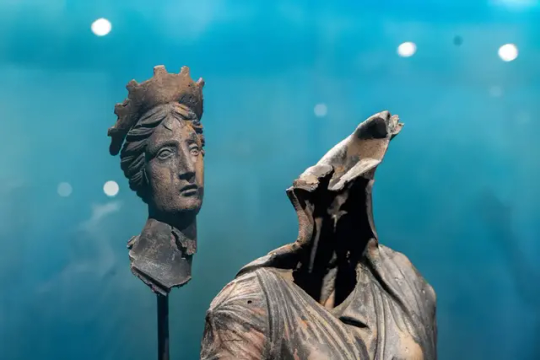

Some of the bronzes are still being restored, but many made it to the Quirinal for the exhibition. In one room, bronzes of arms, feet, ears and other body parts are on display, reflecting the various ailments that were treated at the thermal baths.
“These are unique,” Mariotti said, stopping in front of two bronze plaques showing what he said was a “very accurate” depiction of internal organs. Similar terra-cotta examples existed, he said, but bronze versions were hitherto unknown.
Other statues represented gods and goddesses, but also men, women and small children, wrapped in swaddling cloths. Some were sickly and in need of healing. Others appeared to have benefited from the cures.


The thermal springs are still used today for their therapeutic properties, both in the public baths near the archaeological site and at a private resort.
For San Casciano dei Bagni, a picturesque hilltop town, the ancient finds will hopefully bring new economic prospects, especially after the opening of a new museum in the city center.
Earlier this week, at a property deed transfer in Rome attended by various authorities, the culture ministry formally bought a palazzo in San Casciano dei Bagni from local clerics to house the museum (list price 670,000 euros, around $730,000) and Italy’s culture minister, Gennaro Sangiuliano, pledged to contribute “additional resources.”

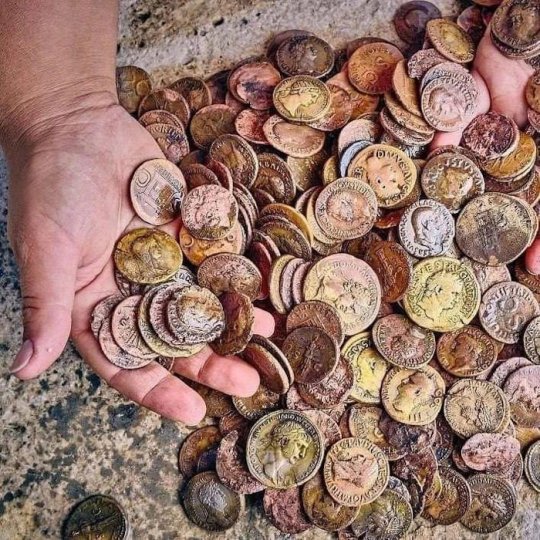

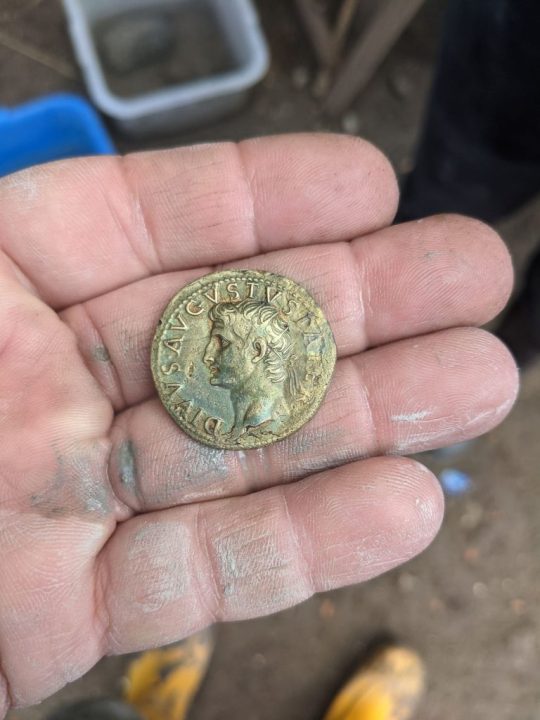
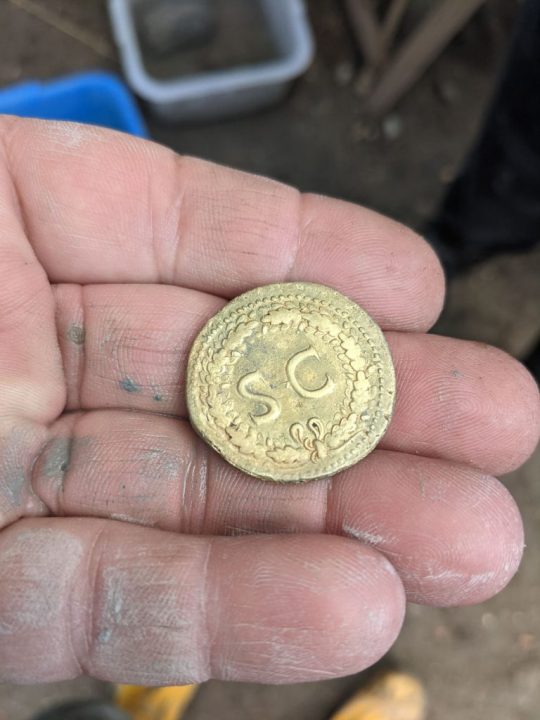

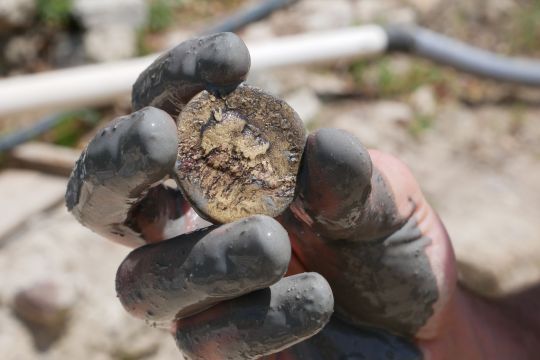
Massimo Osanna, the director of Italy’s state museums said Thursday that he hoped one section of the museum would be ready next year. “I’m an optimist,” he said.
“It’s going to be a tremendous opportunity,” said Agnese Carletti, the town’s mayor. Following on from previous administrations, Carletti’s council championed and funded the local archaeological excavations that led to the finds, offering room and board to archaeology students participating in the summer digs.
A new excavation begins next week, and Tabolli said that it would concentrate on expanding the archaeological site to better understand the context around the sacred pool. “We’ve reconstructed the structure of the sanctuary, but there is still much more to know about the overall site which must have been monumental,” he said.
Osanna said that more surprises could be in store. “We don’t know what else the sanctuary has to offer,” he said.
By Elisabetta Povoledo.
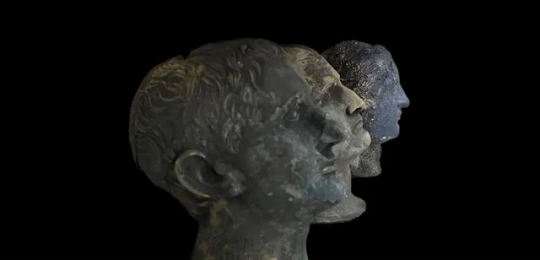



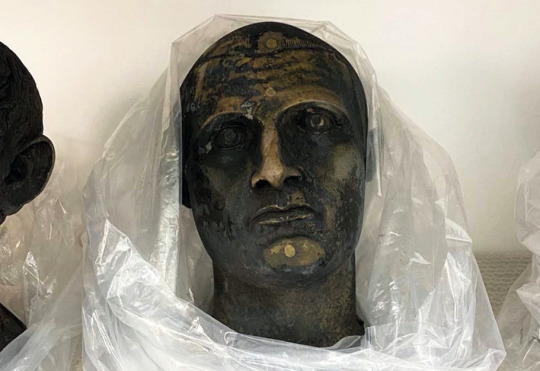

#These Bronze Statues Reveal Ancient Healing Rituals#Etruscan And Roman Treasure Trove Unearthed In San Casciano dei Bagni#bronze#bronze statues#bronze sculpture#roman coins#ancient artifacts#archeology#archeolgst#history#history news#ancient history#ancient culture#ancient civilizations#roman history#roman empire#etruscan history#etruscan art#roman art#ancient art#long reads
126 notes
·
View notes
Text

Bronze aplique depicting the sun god Usil, Etruscan, 500-475 BC
from The J. Paul Getty Museum
718 notes
·
View notes
Text
"In art a Pontic amphora shows Herakles squared off in single combat against a woman armed with spear and shield who is clearly not an amazon, especially since a dignified-looking male with staff stands behind her (London B57). In such circumstances the female is very likely Hera, and that possibility may be strengthened by the goat horn extending up from her cap (or head?); such iconography in Etruscan and early Roman art is later linked with Iuno Sospita. If this interpretation is correct, the artist perhaps intended a story in which Hera challenges her husband's son (the male behind her seems in fact to hinder her spear-thrust)." - Timothy Gantz Early Greek Myth

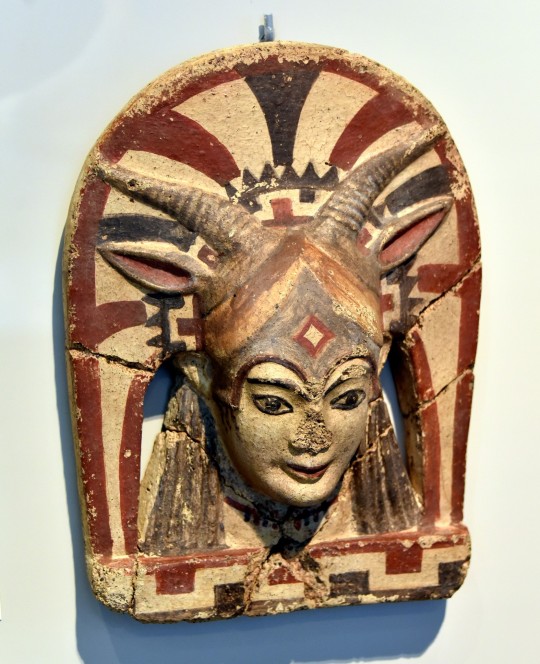

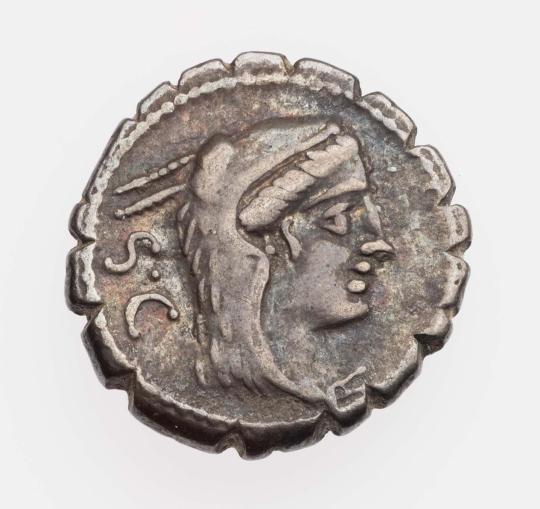
The ultimate square off. I've always loved this weird representation of Uni/Juno Sospita (specially the uncanny antefix). Curiously but totally unrelated, this isn't the only association between Hera/Herakles/Goats:
"The Lacedaemonians are the only Greeks who surname Hera Goat-eater (Aigophagos), and sacrifice goats to the goddess. They say that Heracles founded the sanctuary and was the first to sacrifice goats, because in his fight against Hippocoon and his children he met with no hindrance from Hera, although in his other adventures he thought that the goddess opposed him. He sacrificed goats, they say, because he lacked other kinds of victims." - Pausanias Descriptions of Greece 3.15.9
Hera GOAT confirmed? (don't ask Herakles)
#Hera#Herakles#Uni#Juno Sospita#greek pottery#ancient art#etruscan art#greek mythology#greek myths#i am also aigophagos#love cabrito
8 notes
·
View notes
Text

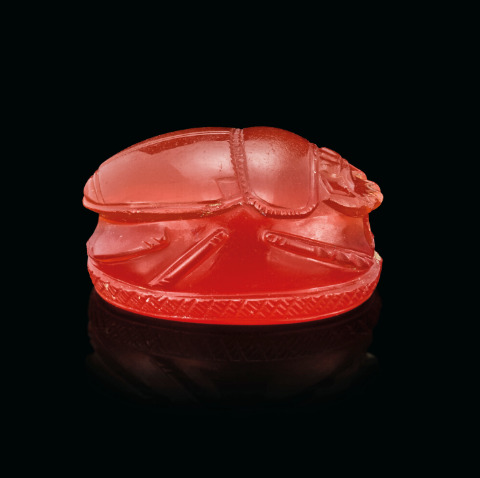
Carnelian scarab intaglio depicting Herakles beating up a snek, Etruscan, 4th century BC
from Christies
429 notes
·
View notes